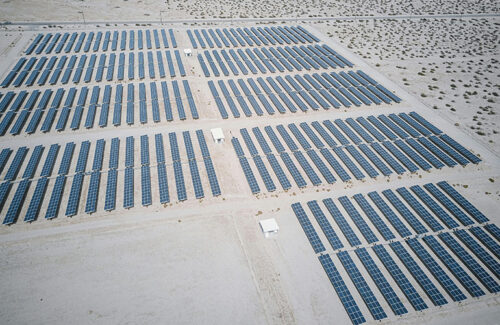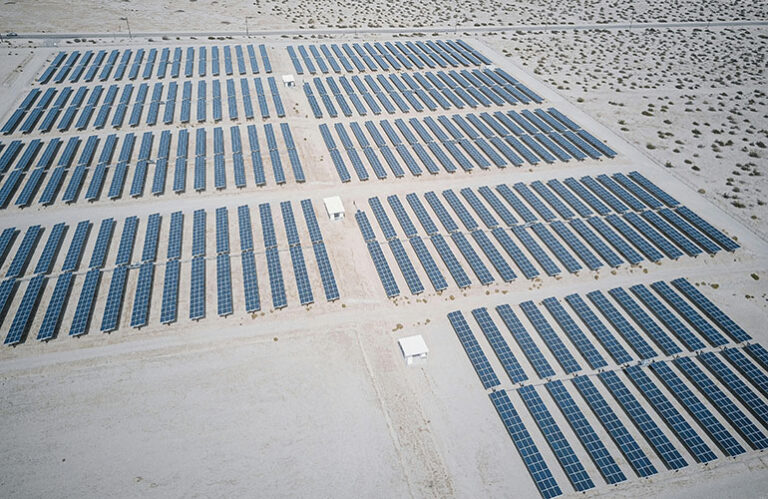Renewable energy sources accounted for more than 90% of the new electric generating capacity that was added in the United States in 2024 – only on solar energy was good for more than 81%.
 Specifically for December 2024, renewable energy sources were 86.9% of the new generating capacity. In its last monthly “Update for energy -infrastructure“Report, Ferc says that 105” units “of solar energy with a total of 4,369 MW were used in December, together with two winds units (324 MW) and two units of biomass (45 mW). Natural gas offered the balance: 717 Mrs.
Specifically for December 2024, renewable energy sources were 86.9% of the new generating capacity. In its last monthly “Update for energy -infrastructure“Report, Ferc says that 105” units “of solar energy with a total of 4,369 MW were used in December, together with two winds units (324 MW) and two units of biomass (45 mW). Natural gas offered the balance: 717 Mrs.
During the entire calendar year 2024, Solar and Wind added 30,816 MW and 3,128 MW respectively. Combined with 213 MW hydropower, 51 MW biomass and 29 MW geothermal steam, renewable energy sources 90.5% of the capacity were added for the year. The balance consisted of the 1,100 Vogtle-4 nuclear reactor in Georgia plus 2,428 MW natural gas, 13 MW coal, 11 MW oil and 28 MW classified as “others.”
Solar accounted for 81.5% of all new generating capacity that was put into use in 2024 – 50% more than the solar capacity that was added in 2023. In December alone, solar energy included 80.1% of all added new capacities. New solar capacity added in 2024 was almost nine times added by natural gas and nuclear energy combined. Solar is now the largest source of new generating capacity that has been added every month for 16 months in succession: September 2023-December 2024.
The adjustment of the differences in capacity factors between solar energy, nuclear energy and natural gas has determined the Sun Day campaign that the new solar capacity added in 2024 probably generates seven times as much electricity as the new nuclear capacity and about five times as much as expected Is of the new natural gascapacity.
New wind was good for a large part of the balance (8.3%) of the capacity additives in 2024, which is more than the new natural gas capacity (6.4%) or nuclear energy capacity (2.9%). In summary, the installed capacities of only solar zon (10.2%) and wind (11.7%) are now more than one fifth (21.9%) of the total available generating capacity of the country on utility scale. However, approximately 30% of American solar capacity is in the form of small-scale/DG systems that are not reflected in Ferc’s data.
The inclusion of that extra solar capacity would bring the share that is closer to a quarter of the total of the nation due to solar energy and wind. With the absorption of hydropower (7.7%), biomass (1.1%) and geothermal (0.3%), renewable energy sources are now claiming a share of 31.0%of the total generating capacity in the field of American utility dish. If small -scale solar capacity is included, renewable energy sources are now around a third of the total American -generating capacity.
The latest capacity additives have brought the share of solar energy into the total available installed capacity-scale capacity to 10.2%, which further expanded the lead over nuclear energy (7.8%) and hydropower (7.7%). Installed solar scale on a tool has now moved to the fourth place-rear natural gas (43.0%), coal (15.3%) and wind (11.7%)-for the share of the generating capacity.
Ferc reports that the net “high probability” additives of solar energy between January 2025 and December 2027 a total of 91,558-MW-a’s amount almost four times the predicted net “high probability” additions for wind (23,601 mw), the fastest growing growing source. Ferc also provides for the growth for hydropower (1,345 MW), geothermal (90 MW) and biomass (61 MW).
In summary, the net new additions with high probability “through all renewable energy sources a total of 116,655 MW with solar energy in total more than 78% and wind another 20%. On the other hand, there is no new nuclear capacity in the three -year prediction of Ferc, while coal, oil and natural gas are expected to be with 23,925 MW, 2,293 MW and 833 MW respectively.
If Ferc’s current “big probability” adds, Solar will be good by 1 January 2028 for almost a sixth (16.1%) of the installed generating capacity of the nation on utility scale. That would be larger than coal or wind (both 12.6%) and considerably more than core power or hydropower (both 7.3%). Assuming that the current growth rates will continue, the installed capacity of solar energy on utility scale will probably surpass the coal and wind within the next two years, so that solar energy will be placed in second place for installed generating capacity-behind only natural gas.
“For more than a decade, renewable energy sources – led by solar energy – have dominated growth in the generating capacity of the US,” noted the executive director of the Sun Day Campaign Ken Bossong. “Consequently, his efforts of the Trump government to reverse this trend are both illogical and probably failing.”
News item from Sun Day


